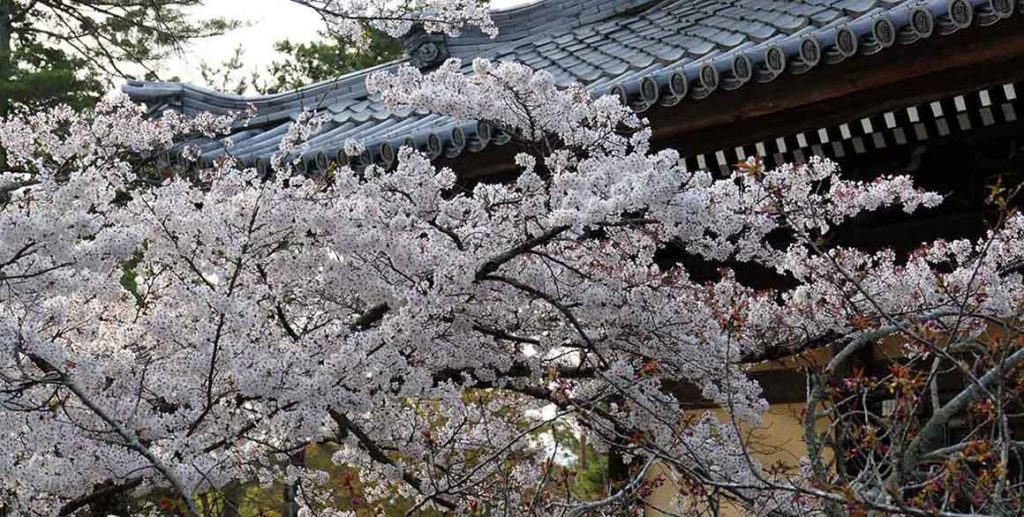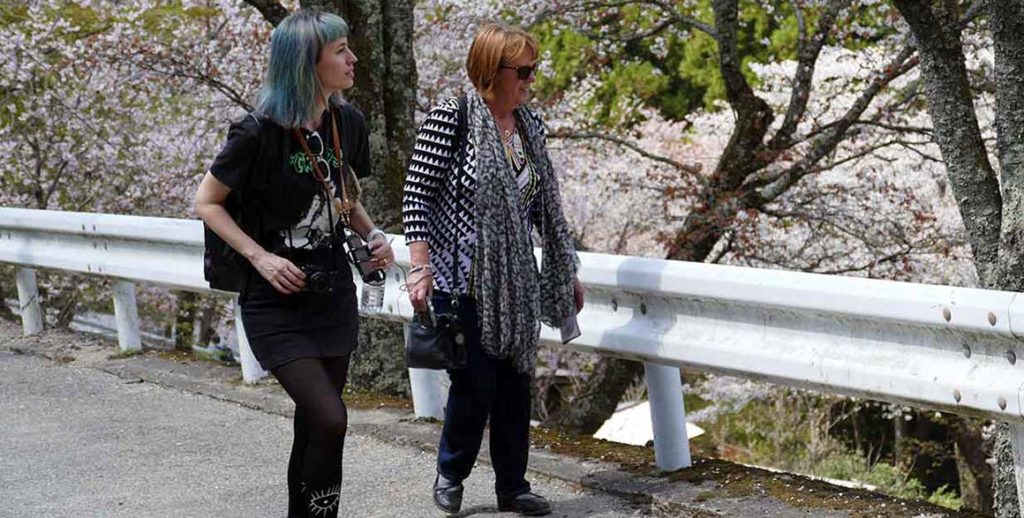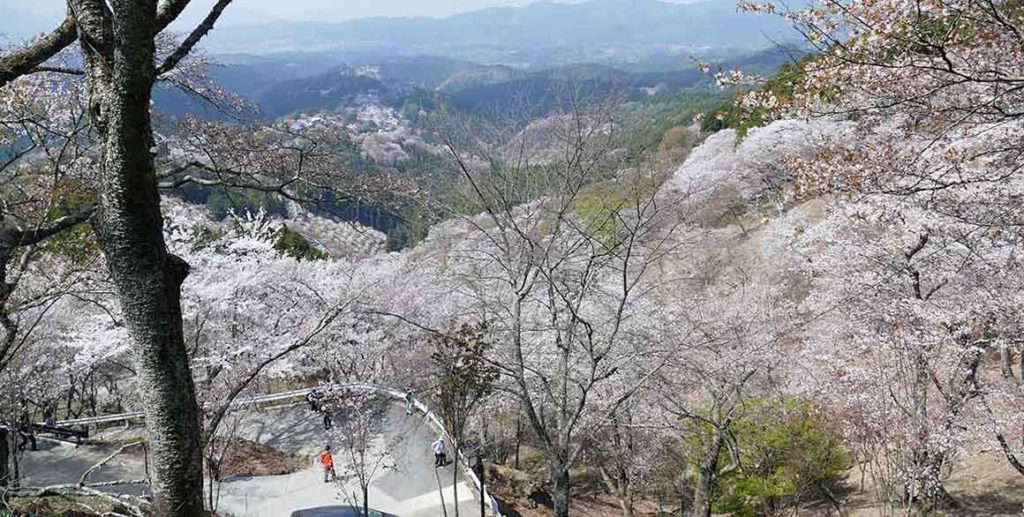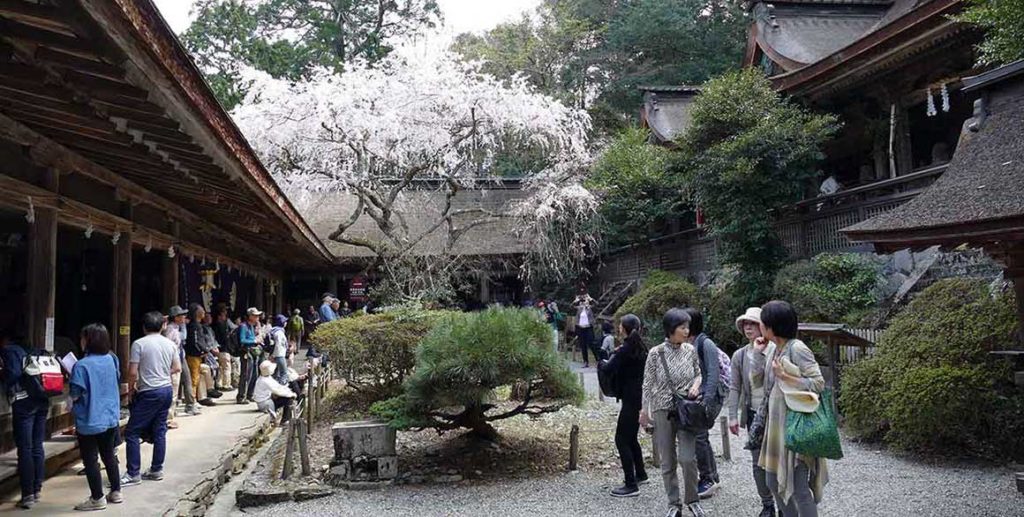Today we caught the train for the 2.5hr trip to Mount Yoshino (Yoshinoyama) in Nara Prefecture. This has been Japan’s most famous cherry blossom viewing spot for many centuries. There were the usual crowds at the station but were soon cleared as buses were filled for the run up the mountain. Michelle and Cae decided to do the walking trail and we finally met near our bus stop, about 2 hrs later.

The roadway up the mountain is long and steep so most tourists opted to take the mini buses which were constantly streaming up the back road. We all decided to walk as far as we wanted and then turn around and come back

It is said that the first trees were planted along the slopes more than 1300 years ago, and today the mountain is covered by approximately 30,000 cherry trees of many different varieties, especially of the Yamazakura variety. Rather than a free standing mountain, Yoshinoyama is a north-facing mountain slope. It is divided into four areas: the Shimo Senbon (lower 1000 trees) at the base of the mountain, Naka Senbon (middle 1000 trees), Kami Senbon (upper 1000 trees) and Oku Senbon (inner 1000 trees) at the top of the mountain. Visitors can enjoy the cherry trees as they ascend the mountain, passing Yoshino’s touristy town with its various temples and shrines, and enjoying hanami in the parks and viewpoints along the way. All the trees were in bloom and looked spectacular.

Showers of petals covered us with every errant breeze, so we were fortunate with our timing as they would all be gone in a matter of weeks. Yoshino Mikumari Shrine is a small Shinto shrine in the upper Kami Senbon area of Yoshinoyama. This serene shrine is dedicated to Ameno Mikumari, a female deity of water and safe childbirth who is believed to bestow fertility on those that pray to her. The shrine displays several ancient portable shrines (mikoshi) and artifacts and is one of four important mikumari shrines in Japan. We stopped here and saw a ceremony taking place, which looked interesting. The shrine’s current main hall was built in 1604 by Toyotomi Hideyoshi’s son Hideyori and features a unique architectural style of the Momoyama Period. The hall’s beautiful, layered bark roof was renovated in 2011, and the structure has been designated part of a UNESCO World Heritage Site since 2004.

This marked the return portion of our trek and we made our way back down to the bus stop. Beryl and I opted to go the rest of the way to the station on the bus and the kids rolled up about half an hour later. Booked our seats for the train and made our way back to Kyoto.

